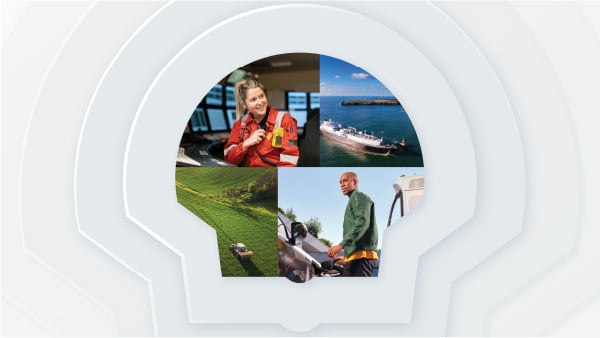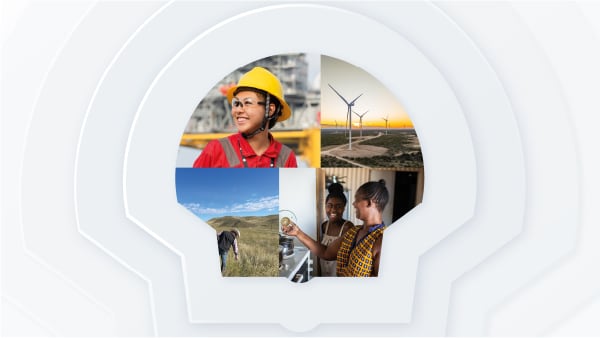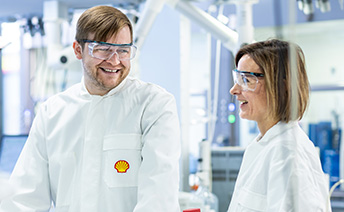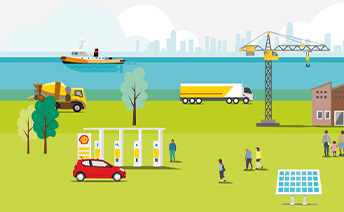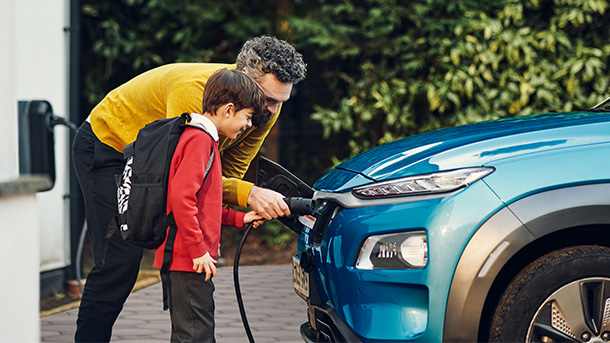Resource use and circular economy
As part of our overall respecting nature ambition, we aim to use water, other resources and materials efficiently, and to increase reuse and recycling. We have conducted detailed assessments across our businesses to better understand our waste streams and define our approach. Our businesses are developing local waste management implementation plans. We are exploring ways to improve the application of circular economy principles by developing circularity strategies.
Water
We are implementing water stewardship principles across our businesses and developing local improvement plans. This includes focusing on the sustainable management of fresh water, including in water-stressed areas.
Our Powering Progress strategy launched in 2021 contained the following water-related statements:
- Our ambition is to conserve fresh water by reducing consumption and increasing reuse and recycling.
- We will reduce the amount of fresh water consumed in our facilities, starting by reducing our consumption of fresh water by 15% by 2025, compared with 2018 levels, in areas where there is high pressure on fresh-water resources.
In 2023, we continued to make progress in reducing our consumption of fresh water in highly water-stressed areas.
At the end of 2023, four of our major facilities were located in areas where there is a high level of water stress based on analysis using water stress tools. These tools include the World Resources Institute's Aqueduct Water Risk Atlas and local assessments. The facilities are:
- Pearl GTL (gas-to-liquids) plant in Qatar;
- Shell Energy and Chemicals Park Singapore;
- Shell Jurong Island chemical plant in Singapore; and
- Tabangao Import Terminal in the Philippines.
In 2023, these facilities consumed 17 million cubic metres of fresh water, compared with 18 million cubic metres in 2022. With this reduction we achieved our commitment to reduce fresh-water consumption by our facilities in areas of high water stress by 15% compared with our 2018 levels with a baseline of 25 million cubic metres. The reduction was mainly the result of decreased water use at the Pearl GTL gas-to-liquids facility in Qatar, and at the Shell Energy and Chemicals Park Singapore following the decommissioning of some processing units.
In 2023, for all sites, our overall intake of fresh water increased to 162 million cubic metres, compared with 148 million cubic metres in 2022 (restated from 156 million cubic metres, following a review of the performance data). This increase was mainly the result of increased production at Shell's Monaca Polymers facility in the USA and consequences of a fire incident at our Deer Park Chemicals site, USA.
Around 33% of our fresh-water intake in 2023 was from public utilities, such as municipal water supplies. The rest was taken from surface water, such as rivers and lakes (around 51%) and groundwater (around 16%). Around 94% of our fresh-water intake in 2023 was used for manufacturing oil products and chemicals, with the rest mainly used for oil and gas production.
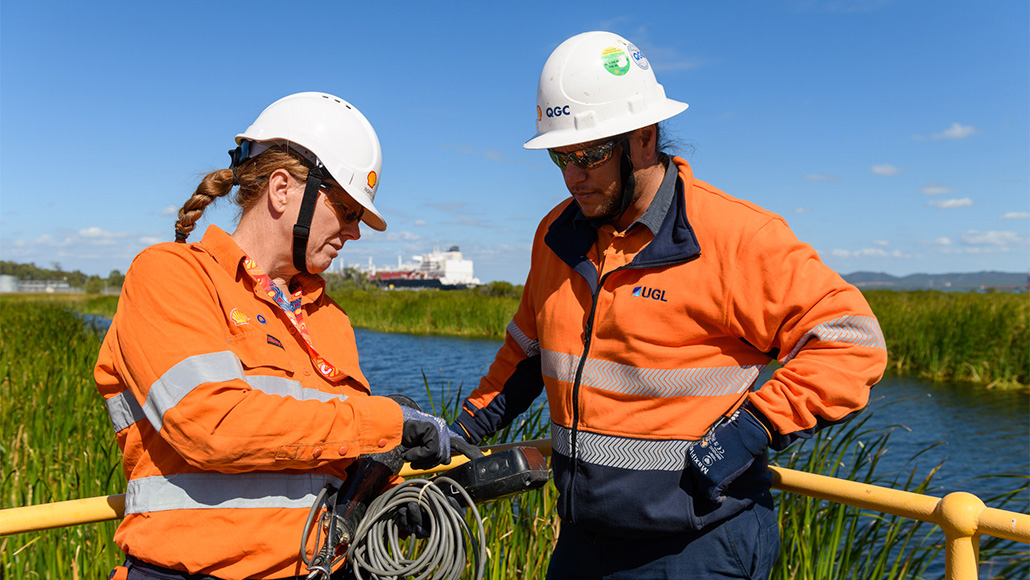
Assessing further water use reduction goals
In addition to our Powering Progress commitment to reduce water consumption in water-scarce areas, we also aimed to assess options for further reduction goals. In 2021 and 2022, we conducted detailed water use assessments at six major Shell facilities:
- QGC upstream and QGC midstream, Australia;
- Shell MDS, Malaysia;
- Shell Hazira LNG Terminal, India;
- Shell Energy and Chemicals Park Rheinland, Germany; and
- Shell Chemicals Park Moerdijk, the Netherlands.
The results of these assessments, along with discussions with stakeholders, have moved us towards a more sustainable and holistic stewardship approach. This goes beyond focusing on water use and includes aspects of governance and water quality, involvement of stakeholders and consideration of catchments. We are now implementing water stewardship principles across our businesses and developing local improvement plans. By the end of 2023, we had completed detailed assessments against these principles at eight of our downstream and upstream facilities to identify opportunities for improvement. We plan to roll out this programme across other facilities and projects in 2024.
Waste water and produced water
We track low-level concentrations of oil, grease and other hydrocarbons in water returned to the environment from the day-to-day running of our facilities (referred to as "discharges to surface water"). We work to minimise these discharges according to local regulatory requirements and our own standards.
In 2023, the combined total of hydrocarbons discharged (oil in effluents) to surface water across all our facilities increased to 1.0 thousand tonnes compared with 0.9 thousand tonnes in 2022. The increase was partially due to discharges from the Shell Energy and Chemicals Park Singapore.
In 2023, we disposed of 58 million cubic metres of produced water, unchanged compared with 2022.
Waste
In 2023, we started to embed the findings from the 24 waste and circularity assessments we conducted in 2021 and 2022 into local performance management systems. Our businesses are developing local waste management implementation plans. We are investigating options to reduce some of the more significant of our waste streams, such as biosludge, potentially contaminated soils and drilling fluids.
We are exploring ways to improve the application of circular economy principles and to identify and integrate the risks and opportunities associated with a "rethink, refuse, reduce, reuse, repair, recycle" hierarchy. We also work with our supply chain to help our businesses progress towards our aim of zero waste.
Mitigation hierarchy
In 2023, we disposed of 631 thousand tonnes of hazardous waste, compared with 878 thousand tonnes in 2022 (restated from 868 thousand tonnes, following a review of the performance data). The decrease was partially because of lower volumes of sour water for disposal from processing activities at the Shell Scotford Refinery in Canada. In 2023, we disposed of 1,619 thousand tonnes of non-hazardous waste, compared with 1,135 thousand tonnes in 2022. The increase was primarily caused by higher volumes of water from production and maintenance activities that required disposal at the Shell-operated Scotford Upgrader (Shell interest 10%), Canada, and the ramp up of low-carbon solutions and other project work.
In total, we disposed of 2,251 thousand tonnes of waste, compared with 2,012 thousand tonnes in 2022 (restated from 1,982 thousand tonnes, following a review of the performance data). We also sent 654 thousand tonnes of residual materials for reuse, recycling or use as a raw material in another process. For example, waste that might otherwise go to landfill can be incinerated to generate energy.

